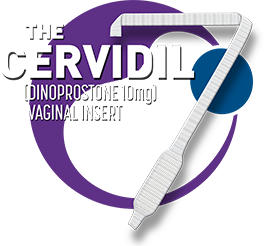Intended for U.S. Healthcare Professionals
Expecting MomsCervical ripening with
Control
at Hand
CERVIDIL is easy to insert and remove1
Everything you need to know
about CERVIDIL in 1 click
Take the CERVIDIL challenge

Seven things you need to know about CERVIDIL. Take 2 minutes to see how many you can answer correctly.
START! >